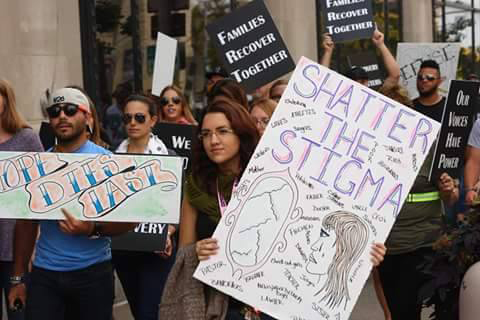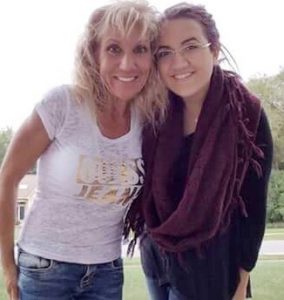Opioids – The Drug Next Door

Part four in a series
Colin is a Greece graduate, a handsome and easygoing kid whom everyone loved. He played football, had good grades and came from a loving home. When Colin was 17, he and his friends took their first opioid. His friend’s father was undergoing cancer treatment and had a bottle of Oxycontin. They liked how the pills made them feel so they continued sneaking some of his pain medication. Unknowingly, Colin planted the seed to a ferocious addiction that nearly cost him his life.
Occasional use of pills led Colin to purchase opioids from kids at his high school. He bought Vicodin, Percocet and Oxycontin. In less than three months, Colin developed a full blown opioid addiction. His body needed the pills or he would get violently sick. As Colin’s tolerance got higher, he needed more opioids to get high and stop the sickness. He could not afford to maintain his growing addiction so he began on a road to crime.
Once Colin’s girlfriend started using, it was even harder to afford their addiction. He began dealing pain pills to help sustain both of their addictions. By the age of 18, Colin needed 10 doses daily of 80mg Oxycontin to maintain his drug habit, at a cost of several hundred dollars a day. He was forced to turn to a cheaper opioid, heroin.
Colin had an aversion to needles and never wanted to inject so he snorted the heroin. The cost of the heroin was a fraction of the cost of pills and the high was stronger. He continued digging deeper into the dark hole of addiction. Eventually the snorting was no longer powerful enough to keep his addiction fed. At the age of 19, his friend suggested that Colin inject the heroin. Due to his fear of needles his friend offered to inject him. Colin closed his eyes and let his friend tourniquet his arm and inject the first needle of heroin. Colin was 19 years old and experienced the most amazing and fast acting high he had ever felt.
Colin’s addiction was now even more deadly. Through the years of his addiction, he was arrested 17 different times for robbery. He plead guilty to drug use and was processed through Drug Court. He agreed to a rehabilitation program at Unity Health. Colin says, “I had no intention on staying clean. I just wanted to beat the system. I didn’t care about anything but getting high.”
His arrests and short-lived recoveries were like a revolving door of jail time and recovery programs. The cost of his addiction was everything: jobs, relationships, his standards and his self-esteem. He felt hopeless and believed he was, “nothing but a drug addict.” At the age of 26, Colin had just gotten out of jail. That morning his friend picked him up and he used heroin right away in the car. He injected four bags and did not feel the high he was looking for, so he injected four more bags. Colin overdosed and nearly died that morning. An EMT arrived in time and used Narcan to save his life.
The last time Colin was sent to jail, he began working with the Monroe County Drug Counselor, Craig Johnson. Craig helped Colin figure out how to want to be free of his addiction. He also taught Colin how to open up and do a self-inventory. Even though Colin was popular in school and had a great family, he felt a deep void in his life. Craig helped him identify that void and learn how to address it and replace his addictions with good healthy habits. Upon Colin’s release, a new drug just came into Monroe County Jail to help heroin addicts. This drug would change Colin’s life, as well as the lives of many other opioid addicts.
Vivitrol is an opioid blocking medication. It is a non-addictive, monthly injection that creates a barrier which blocks opioids from attaching to the opioid receptors in the brain. This helps prevent the patient from relapsing while they focus on counseling. The Vivitrol Program arrived at the Monroe Correctional Facility and Jail last year. Sheriff Patrick O’Flynn, in response to a growing heroin problem in the communities, initiated several programs in the Monroe County Jail (MCJ) and the Monroe Correctional Facility (MCF) in an effort to combat this epidemic.
A two-pronged approach was developed, a heroin drug addiction counseling group at MCF and a Medically Assisted Treatment (MAT) for those soon to be released from both facilities. This led to the formation of the Opiate Recovery Group at the Monroe Correctional Facility. Drug Counselors run this weekly group for those with opiate addiction as a primary or secondary diagnosis. From this group, volunteers are sought for the MAT program which includes the use of Vivatrol. This allows a window of opportunity for treatment, increasing the chances of success. Inmates who are identified are referred to the Medication Assisted Treatment Group and offered bi-weekly treatment facilitated by a staff member from Huther Doyle, a community partner.
Sheriff O’Flynn is hopeful these steps will help in the fight against opiate addiction and the many side effects that come with it. According to O’Flynn, “Our communities continue to see young lives lost or wasted by this epidemic with limited resources available to combat it. With a captive, sober audience, an opportunity now exists that did not previously exist in our community.”
Colin has been receiving the monthly Vivitrol injections since March 2016 and just celebrated his one-year anniversary of being drug free. He credits much of his success to Craig Johnson (now of Huther Doyle) and the Vivitrol program that was offered to him at his release from the County Jail. Now 29, Colin says, “It feels so good to be free of the cravings, have a job, money, car and able to go into a store and buy things.” He continues outpatient therapy at Huther Doyle and has learned to identify his triggers so that he can continue to build on his success.
Colin needed to completely remove himself from the people, places and things of his past. He avoids the parts of the city that supply the drugs. He recalls that there were times he could go to these areas and dealers handed out heroin samples for free to get people hooked or re-hooked.
Colin has a new circle of friends that support his healthy lifestyle. He loves to listen to music and work out. He feels regret for losing so much time from his youth to this devastating addiction. He said, “The past 11 years the drugs controlled me but not anymore. I control me and that feels good.” Colin’s future is bright and he looks forward to someday owning a home and having a wife and family.

Carlee Hulsizer, a 2014 Spencerport graduate, is a recovered opioid addict. Carlee began substance abuse with alcohol in middle school. She was bullied for being the smart kid and was experiencing social issues. Despite having a strong mom who provided an excellent role model to Carlee, she was lacking self-esteem. The bullying led her to choose a path of substance abuse to fit in. It began in seventh grade with alcohol. Carlee’s parents were divorced and when she was at her dad’s house she would steal his beer. She found it easy to have friends who wanted to drink with her. This made her feel accepted and for the first time felt like she “fit in.” She enjoyed not being picked on anymore.
By eighth grade her substance abuse led to marijuana. Carlee recalls that she would say to herself “that was it,” meaning she would not advance to anything more dangerous or stronger. But as the addictions grew, she forgot the promises she made to herself. The next phase was synthetic marijuana in her early high school years. After witnessing one of her friends suffer permanent brain damage from using it she switched over to pain pills. By the age of 17, Carlee was headed down the dangerous road of an opioid addiction.
During her addiction, Carlee began suffering from anxiety and depression. As the drug use got worse so did her symptoms. Carlee’s mom eventually learned of her drug use and insisted her daughter get treatment. Carlee had no interest in getting clean so she chose to move out of her mom’s house and live with her dad. She knew she could get away with it at his house and have better access to alcohol and pills.
By her senior year she was missing a lot of school, her grades had dropped, she quit sports and chose getting high over special senior events. She became introverted and would recluse to her room days at a time to get high all alone with the pain pills. Carlee hit bottom. As her senior year was being destroyed by her opiate addiction, she knew she had to return to her mom to get help. Her mom welcomed her back home and helped her begin the road to recovery. Carlee has been drug free since March 22, 2014.
Carlee is now the Executive Outreach Director for Recovery Now New York. This is an organization that works with addicts to help them find the resources to begin recovery. She finds meaning in her career as she helps other addicts as well as working in advocacy to help fight the opioid epidemic.
Carlee wants to emphasize the importance of parents communicating with their children. “Build trust and safety in open, on-going communication,” advises Carlee. She recalls that her mom had a good rule, “If I told the truth I would not be in trouble, but if I lied then I would be in a lot of trouble.” This trust allowed Carlee to turn to her mom during her time of need so that she could help her. Carlee wants teens to know, “There is nothing glamorous about drugs. The feeling of living drug free is far better than any high you will ever find.” She understands the peer pressure challenges of being a young teen. She understands how tough it can be but also wants teens to understand, “It does not last forever, you have the rest of your life in front of you.” To learn more from Carlee or about Recovery Now New York visit www.recoverynowny.com/.
A local senator has been on the front lines fighting on behalf of parents and addicts in this opioid epidemic. Senator Robert Ortt co-chairs the NYS Task Force on Heroin and Opioid Addiction. He and his senate colleagues passed a package of legislation in January 2017 to help curb the heroin and opioid abuse crisis and decrease the number of related deaths. The Task Force was created in March 2014 to address the scourge of heroin in the state. A series of public forums were held across the state to focus on bills to improve addiction prevention, access to treatment, and support for New York residents in recovery. This year they successfully fought to include $189 million in the budget to strengthen prevention, treatment, recovery and education services.
Thirty recommendations are offered in the package and many of them have already been incorporated by the senate, governor and assembly. Some of the highlights of this bill include:
•Education: Increased education on pain pill prescribers, educating consumers on prescription abuse, limiting opioid prescription to seven days, expanding the reporting of the opioid overdose data.
•Treatment: Ending prior insurance authorization to immediate access, lengthening the amount of time families can seek emergency drug treatment to 72 hours, allowing more licensed professionals to administer overdose reversal medicine, expanding wrap around services to prevent relapses, including follow up treatment after discharge, expanding insurance coverage for treatment, authorizing emergency substance use disorder medication coverage without insurance authorization, expanding access to opioid reversal medication (Narcan) coverage, removing prior authorization for Vivitrol or other medication assisted therapies.
•Funding: $189 million allocated for funding to be used for a variety of treatments and education and support systems, 11 new adolescent clubhouses for recovery for teens and young adults, 16 new recovery community centers, 270 new treatment beds, 2,335 new treatment program slots, 170 new housing units, $1 million for overdose prevention kits.
Senator Ortt believes you cannot arrest your way out of this epidemic. The two key elements to weakening the grip of heroin are prevention and immediate treatment. He believes it is important to educate doctors and patients. Ortt says, “Physicians need to be part of the solution by learning how to satisfy pain and not cause addictions. In many cases people become addicted in 30 days.” Ortt hopes that with the new legislation it will be easier for an addict to be identified and get treatment in a timely manner with no added stress of insurance delays.
The increase in new beds was a critical component to provide more opportunity for treatment. According to Senator Ortt, “Each new bed costs $200 thousand to get into use. This package was built from the bottom up.” Ortt spent the past few years working on this task force and meeting people and families who were directly affected by this epidemic. He found many parents thought, “It can’t happen in my family,” and then they wake up to find addiction has a grip on their son or daughter’s life. Senator Ortt strongly urges parents to “stay aware.”
This series will continue next week with Part 5, a final bonus week highlighting a new recovery community, faith based recovery, a recovery fitness program and a story from a local dad who lost his son to heroin and who uses his grief to blaze a trail of advocacy into the drug riddled streets of Rochester.



